(Page créée avec « Baking soda ») |
(update property name) |
||
| (22 révisions intermédiaires par 2 utilisateurs non affichées) | |||
| Ligne 1 : | Ligne 1 : | ||
| − | {{ | + | {{Tuto Details |
|SourceLanguage=fr | |SourceLanguage=fr | ||
|Language=en | |Language=en | ||
|IsTranslation=1 | |IsTranslation=1 | ||
| + | |Main_Picture=Extincteur_extincteur_pr_sentation.png | ||
| + | |Licences=Attribution-ShareAlike (CC BY-SA) | ||
| + | |Description=Make a fire extinguisher for type A and B fires. | ||
| + | |Area=Tools | ||
|Type=Tutorial | |Type=Tutorial | ||
| − | |||
| − | |||
| − | |||
|Difficulty=Very easy | |Difficulty=Very easy | ||
| + | |Duration=30 | ||
| + | |Duration-type=minute(s) | ||
|Cost=1 | |Cost=1 | ||
|Currency=EUR (€) | |Currency=EUR (€) | ||
| − | | | + | |Tags=extincteur, bicarbonate, vinaigre, extinguisher, baking soda, vinegar, NomadeDesMers, LT4Refugees |
| − | |||
| − | |||
| − | |||
|SourceLanguage=fr | |SourceLanguage=fr | ||
|Language=en | |Language=en | ||
|IsTranslation=1 | |IsTranslation=1 | ||
}} | }} | ||
| − | {{ | + | {{Introduction |
|Introduction=Fires in slums are a recurring problem with very often devastating consequences. In South Africa, an average of 10 "shacks" fires per day have been recorded each year, causing thousands of families to lose their belongings and housing without any possibility of compensation. The fires, often belatedly detected, spread at high speed in these dwellings made of flammable materials. Prevention maneuvers are of course preferred to the means of reaction, but the populations often lack tools at their disposal to react quickly in case of problem. | |Introduction=Fires in slums are a recurring problem with very often devastating consequences. In South Africa, an average of 10 "shacks" fires per day have been recorded each year, causing thousands of families to lose their belongings and housing without any possibility of compensation. The fires, often belatedly detected, spread at high speed in these dwellings made of flammable materials. Prevention maneuvers are of course preferred to the means of reaction, but the populations often lack tools at their disposal to react quickly in case of problem. | ||
| Ligne 26 : | Ligne 26 : | ||
This technology was developed by two South African students from the University of Cape Town. The design is inspired by the work of Kahn and Firfirey (2011). It has been tested and approved in the presence of city firefighters, and is effective against Type A fires (common fuels such as wood or paper) and B (flammable liquids such as petroleum, paraffin or LPG), types of the most recurrent fires in slums. Its implementation on site was unfortunately not developed due to lack of time and resources, and the technology has not yet been taken up by other study groups or organizations, but the tutorial was transmitted by the team Nomade des Mers has different people who have noted its usefulness. Its location in slums requires substantial work but does not pose a major challenge, mainly because it does not conflict with the habits of homes. People may be reluctant to systematically make this low-tech every time a fire is extinguished (very scouring case), models are to imagine and develop for the manufacture and spread easily. | This technology was developed by two South African students from the University of Cape Town. The design is inspired by the work of Kahn and Firfirey (2011). It has been tested and approved in the presence of city firefighters, and is effective against Type A fires (common fuels such as wood or paper) and B (flammable liquids such as petroleum, paraffin or LPG), types of the most recurrent fires in slums. Its implementation on site was unfortunately not developed due to lack of time and resources, and the technology has not yet been taken up by other study groups or organizations, but the tutorial was transmitted by the team Nomade des Mers has different people who have noted its usefulness. Its location in slums requires substantial work but does not pose a major challenge, mainly because it does not conflict with the habits of homes. People may be reluctant to systematically make this low-tech every time a fire is extinguished (very scouring case), models are to imagine and develop for the manufacture and spread easily. | ||
}} | }} | ||
| − | {{ | + | {{Materials |
|Step_Picture_00=Extincteur_IMG_9929.JPG | |Step_Picture_00=Extincteur_IMG_9929.JPG | ||
|Material=* A plastic bottle of 2L | |Material=* A plastic bottle of 2L | ||
| Ligne 46 : | Ligne 46 : | ||
* Instead of the drill, you can use a heated knife or other tool that can drill a hole in a plastic bottle, as cleanly as possible. | * Instead of the drill, you can use a heated knife or other tool that can drill a hole in a plastic bottle, as cleanly as possible. | ||
}} | }} | ||
| − | {{ | + | {{Separator}} |
| − | {{ | + | {{Tuto Step |
|Step_Picture_00=Extincteur_r_action.png | |Step_Picture_00=Extincteur_r_action.png | ||
|Step_Title=Operation | |Step_Title=Operation | ||
| Ligne 56 : | Ligne 56 : | ||
A hole is drilled in the bottle. When you want to activate the fire extinguisher, pierce the bag containing baking soda. Vinegar, mixed with water, reacts with baking soda to form carbon dioxide, water and sodium acetate. By shaking the bottle, the reaction is accelerated: the carbon dioxide produced pressurizes the bottle, and a CO2-water mixture is ejected through the hole, which is pointed towards the fire. Water, carbon dioxide and soda extinguish the fire, and the foam created by the washing-up liquid prevents it from being re-ignited. | A hole is drilled in the bottle. When you want to activate the fire extinguisher, pierce the bag containing baking soda. Vinegar, mixed with water, reacts with baking soda to form carbon dioxide, water and sodium acetate. By shaking the bottle, the reaction is accelerated: the carbon dioxide produced pressurizes the bottle, and a CO2-water mixture is ejected through the hole, which is pointed towards the fire. Water, carbon dioxide and soda extinguish the fire, and the foam created by the washing-up liquid prevents it from being re-ignited. | ||
}} | }} | ||
| − | {{ | + | {{Tuto Step |
|Step_Picture_00=Extincteur_per_age_7_mm.png | |Step_Picture_00=Extincteur_per_age_7_mm.png | ||
|Step_Picture_01=Extincteur_scotch.png | |Step_Picture_01=Extincteur_scotch.png | ||
| Ligne 65 : | Ligne 65 : | ||
'''Note:''' The bottle will be filled to three quarters with liquid, so it is important to make the hole above this limit. | '''Note:''' The bottle will be filled to three quarters with liquid, so it is important to make the hole above this limit. | ||
}} | }} | ||
| − | {{ | + | {{Tuto Step |
|Step_Picture_00=Extincteur_vinaigre.png | |Step_Picture_00=Extincteur_vinaigre.png | ||
|Step_Picture_01=Extincteur_liquide_vaisselle.png | |Step_Picture_01=Extincteur_liquide_vaisselle.png | ||
| Ligne 74 : | Ligne 74 : | ||
'''Note:''' for convenience, you can mix dishwashing liquid and water before pouring into the bottle. | '''Note:''' for convenience, you can mix dishwashing liquid and water before pouring into the bottle. | ||
}} | }} | ||
| − | {{ | + | {{Tuto Step |
|Step_Picture_00=Extincteur_feraille.png | |Step_Picture_00=Extincteur_feraille.png | ||
|Step_Picture_01=Extincteur_sac_plastique.png | |Step_Picture_01=Extincteur_sac_plastique.png | ||
| Ligne 80 : | Ligne 80 : | ||
|Step_Picture_03=Extincteur_bicarbonate.png | |Step_Picture_03=Extincteur_bicarbonate.png | ||
|Step_Title=Baking soda | |Step_Title=Baking soda | ||
| − | |Step_Content=''' | + | |Step_Content='''Check that the plastic bag is not punctured before doing this step''' |
| − | * | + | * Cut the paper clip (or pieces of metal) into small pieces using the cutting pliers. They will help pierce the bag; |
| − | * | + | * Slide the plastic bag through the neck of the bottle; |
| − | * | + | * Pour the pieces of paperclip (or metal) and baking soda (in this order), being careful not to pierce the bag. |
}} | }} | ||
| − | {{ | + | {{Tuto Step |
|Step_Picture_00=Extincteur_d_clencheur.png | |Step_Picture_00=Extincteur_d_clencheur.png | ||
|Step_Picture_01=Extincteur_bouchon_li_ge.png | |Step_Picture_01=Extincteur_bouchon_li_ge.png | ||
| − | |Step_Title= | + | |Step_Title=Preparation of the activator |
| − | |Step_Content=* | + | |Step_Content=* Drill a 4 mm hole in the cap of the plastic bottle; |
| − | * | + | * Place the spring on the nail and slip the nail into the hole of the cap, it is not supposed to be too much resistance; |
| − | * | + | * Plant the nail in the cork. |
| − | ''' | + | '''Note:''' When using the extinguisher, it is the pressure of the cork on the pieces of metal that will pierce the bag. |
}} | }} | ||
| − | {{ | + | {{Tuto Step |
|Step_Picture_00=Extincteur_fermeture.png | |Step_Picture_00=Extincteur_fermeture.png | ||
|Step_Picture_01=Extincteur_d_coupe_plastique.png | |Step_Picture_01=Extincteur_d_coupe_plastique.png | ||
| − | |Step_Title= | + | |Step_Title=Final assembly |
| − | |Step_Content= | + | |Step_Content=Close the bottle with its cap, by wedging the plastic bag in the neck, so as to make a small bag of baking soda suspended above the liquid. The pocket should not be too big (just the volume of baking soda) so that it can be pierced by pressing the nail. |
| − | + | Remove excess plastic around the neck. | |
| − | + | The fire extinguisher is ready! | |
}} | }} | ||
| − | {{ | + | {{Tuto Step |
|Step_Picture_00=Extincteur_extincteur.png | |Step_Picture_00=Extincteur_extincteur.png | ||
|Step_Picture_01=Extincteur_retirer_le_scotch.png | |Step_Picture_01=Extincteur_retirer_le_scotch.png | ||
| Ligne 112 : | Ligne 112 : | ||
|Step_Picture_03=Extincteur_r_action.png | |Step_Picture_03=Extincteur_r_action.png | ||
|Step_Picture_04=Extincteur_feu_teint.png | |Step_Picture_04=Extincteur_feu_teint.png | ||
| − | |Step_Title= | + | |Step_Title=Use |
| − | |Step_Content=1. | + | |Step_Content=1. Remove the tape; |
| − | 2. | + | 2. Shake the bottle by plugging the hole with a finger to thoroughly mix the dishwashing liquid, water and vinegar; |
| − | 3. | + | 3. Press the nail to pierce the bag. Repeat the operation until the bag is well drilled; |
| − | 4. | + | 4. Shake the bottle by plugging the hole with a finger to dissolve the bicarbonate in mixture and increase the pressure; |
| − | 5. | + | 5. Direct the jet towards the fire; |
| − | 6. | + | 6. Sweep the base of the fire with the foam. '' 'Do not aim at the flames!' '' Aim the base of the fire to extinguish it. |
| − | 7. | + | 7. It is advisable to turn the bottle over for easier aiming, and so that all the liquid is well ejected. |
}} | }} | ||
| − | {{ | + | {{Tuto Step |
| − | |Step_Title= | + | |Step_Title=Safety first! |
| − | |Step_Content=* | + | |Step_Content=* Do not ingest the vinegar. In case of contact with eyes or hands, rinse with plenty of water. |
| − | * | + | * Be careful using the drill or planting the nail in the cap. |
| − | * | + | * Do not direct the jet of foam towards you or other people, aim the fire. |
| − | * | + | * Be careful when activating the fire extinguisher. Hit the nail with the palm of your hand to avoid injury. |
| − | * | + | * Attack the base of the fire, not the flames. |
| − | * | + | * Metal is an excellent thermal conductor. It is advisable to thoroughly soak the metal parts that may have been affected by the fire, to avoid any recovery. |
}} | }} | ||
| − | {{ | + | {{Notes |
| − | |Notes= | + | |Notes= |
| − | |||
| − | |||
| − | |||
| − | |||
| − | |||
| − | |||
| − | |||
| − | |||
}} | }} | ||
| − | {{ | + | {{Tuto Status |
| − | |Complete= | + | |Complete=Published |
}} | }} | ||
Version actuelle datée du 22 octobre 2019 à 16:05
Description
Make a fire extinguisher for type A and B fires.
Sommaire
Introduction
Fires in slums are a recurring problem with very often devastating consequences. In South Africa, an average of 10 "shacks" fires per day have been recorded each year, causing thousands of families to lose their belongings and housing without any possibility of compensation. The fires, often belatedly detected, spread at high speed in these dwellings made of flammable materials. Prevention maneuvers are of course preferred to the means of reaction, but the populations often lack tools at their disposal to react quickly in case of problem.
In South Africa, a conventional fire extinguisher costs around € 10. Because fires are very common, this amount can become very important for a low-income family. This low-tech fire extinguisher is mainly made from recycled materials, and products to buy are common and available for less than one euro.
Matériaux
- A plastic bottle of 2L
- A fine plastic bag (for fruits for example)
- A big nail (100 mm x 4 mm)
- A BIC pencil spring
- A cork
- Paperclips or pieces of metal (drilling drops for example)
- Masking tape (for painting)
- 750 mL of alcohol vinegar
- 750 mL of water
- 105 g of baking soda
- One tablespoon of dishwashing liquid
Outils
- A drill
- Two wicks (7 mm and 4 mm)
- Cutting pliers
- A funnel
- Instead of the drill, you can use a heated knife or other tool that can drill a hole in a plastic bottle, as cleanly as possible.
Étape 1 - Operation
The low-tech fire extinguisher is based on the reaction between baking soda and acetic acid vinegar.
Water absorbs heat by evaporating; baking soda decomposes during an endothermic reaction (which absorbs heat) and creates water when exposed to a temperature exceeding 270 ° C; carbon dioxide is a heavy gas that "displaces" oxygen and "starves" the fire.
A hole is drilled in the bottle. When you want to activate the fire extinguisher, pierce the bag containing baking soda. Vinegar, mixed with water, reacts with baking soda to form carbon dioxide, water and sodium acetate. By shaking the bottle, the reaction is accelerated: the carbon dioxide produced pressurizes the bottle, and a CO2-water mixture is ejected through the hole, which is pointed towards the fire. Water, carbon dioxide and soda extinguish the fire, and the foam created by the washing-up liquid prevents it from being re-ignited.
Étape 2 - Preparation of the bottle
Drill a 7 mm diameter hole in the top of the bottle and cover it with masking tape.
Note: The bottle will be filled to three quarters with liquid, so it is important to make the hole above this limit.
Étape 3 - the water/vinegar mix
Pour 750 mL of water, 750 mL of vinegar, and tablespoon of dishwashing liquid into the bottle.
Note: for convenience, you can mix dishwashing liquid and water before pouring into the bottle.
Étape 4 - Baking soda
Check that the plastic bag is not punctured before doing this step
- Cut the paper clip (or pieces of metal) into small pieces using the cutting pliers. They will help pierce the bag;
- Slide the plastic bag through the neck of the bottle;
- Pour the pieces of paperclip (or metal) and baking soda (in this order), being careful not to pierce the bag.
Étape 5 - Preparation of the activator
- Drill a 4 mm hole in the cap of the plastic bottle;
- Place the spring on the nail and slip the nail into the hole of the cap, it is not supposed to be too much resistance;
- Plant the nail in the cork.
Note: When using the extinguisher, it is the pressure of the cork on the pieces of metal that will pierce the bag.
Étape 6 - Final assembly
Close the bottle with its cap, by wedging the plastic bag in the neck, so as to make a small bag of baking soda suspended above the liquid. The pocket should not be too big (just the volume of baking soda) so that it can be pierced by pressing the nail.
Remove excess plastic around the neck.
The fire extinguisher is ready!
Étape 7 - Use
1. Remove the tape;
2. Shake the bottle by plugging the hole with a finger to thoroughly mix the dishwashing liquid, water and vinegar;
3. Press the nail to pierce the bag. Repeat the operation until the bag is well drilled;
4. Shake the bottle by plugging the hole with a finger to dissolve the bicarbonate in mixture and increase the pressure;
5. Direct the jet towards the fire;
6. Sweep the base of the fire with the foam. 'Do not aim at the flames!' Aim the base of the fire to extinguish it.
7. It is advisable to turn the bottle over for easier aiming, and so that all the liquid is well ejected.
Étape 8 - Safety first!
- Do not ingest the vinegar. In case of contact with eyes or hands, rinse with plenty of water.
- Be careful using the drill or planting the nail in the cap.
- Do not direct the jet of foam towards you or other people, aim the fire.
- Be careful when activating the fire extinguisher. Hit the nail with the palm of your hand to avoid injury.
- Attack the base of the fire, not the flames.
- Metal is an excellent thermal conductor. It is advisable to thoroughly soak the metal parts that may have been affected by the fire, to avoid any recovery.
Published
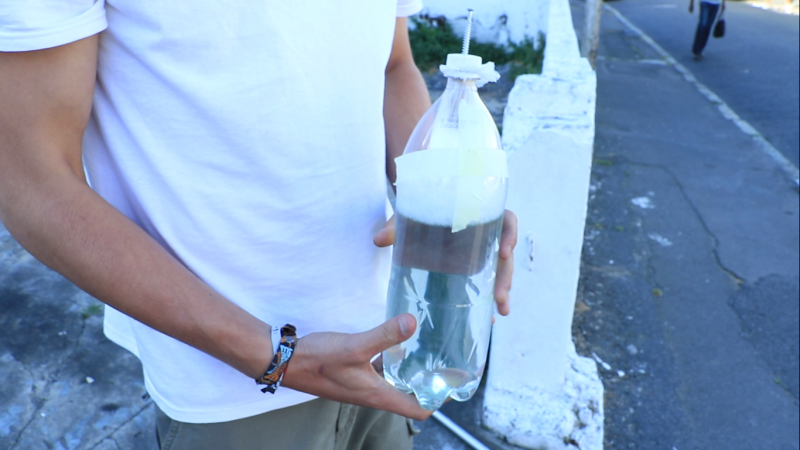
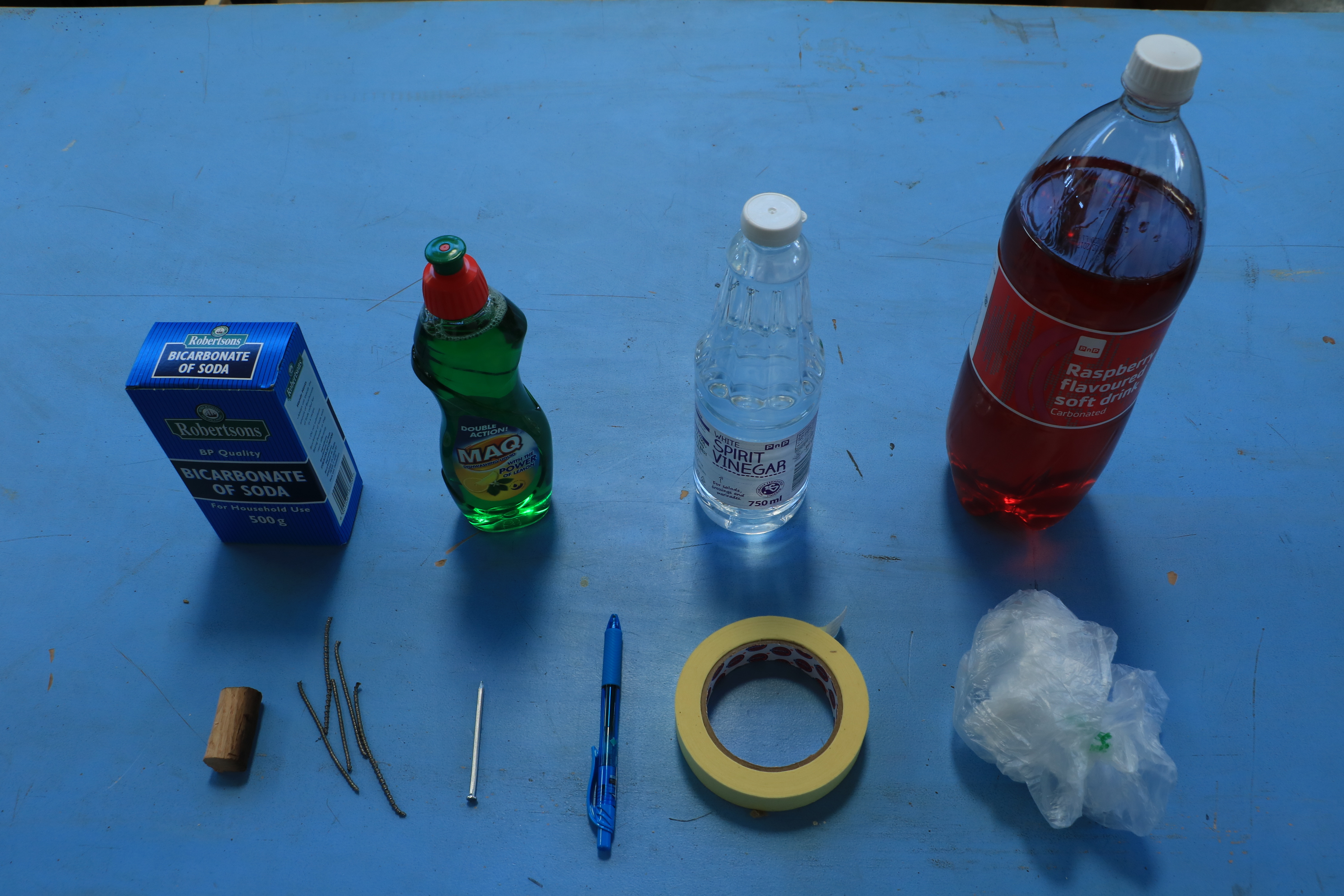
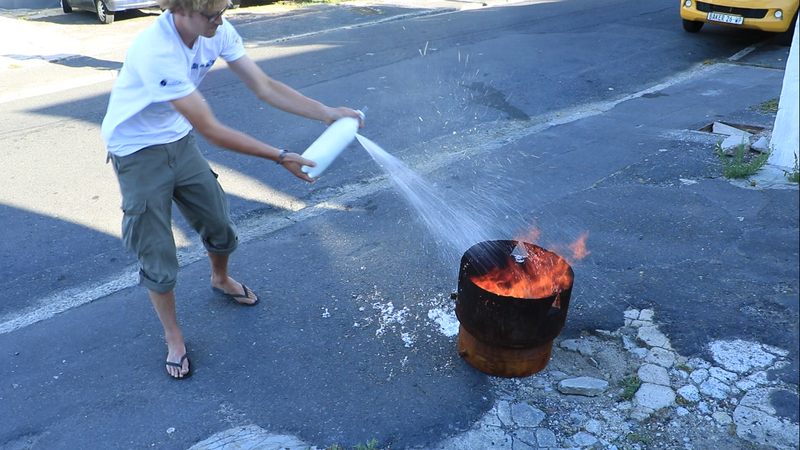
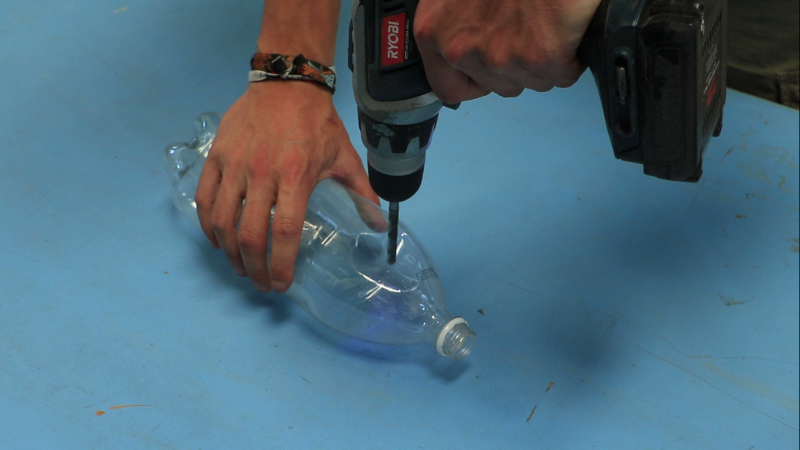
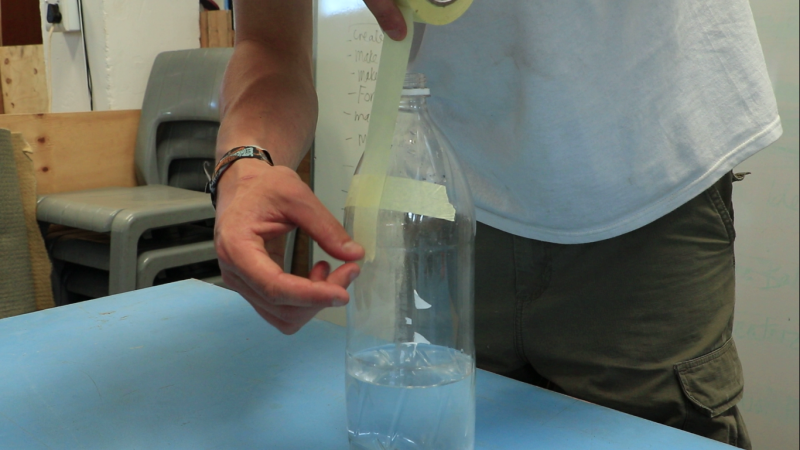
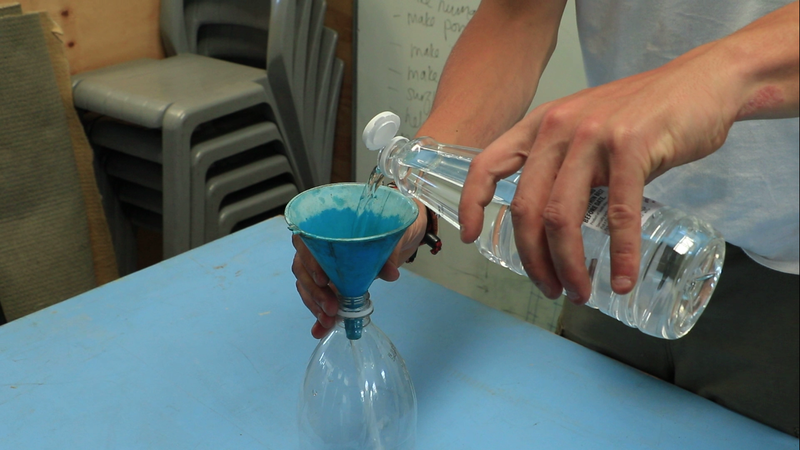
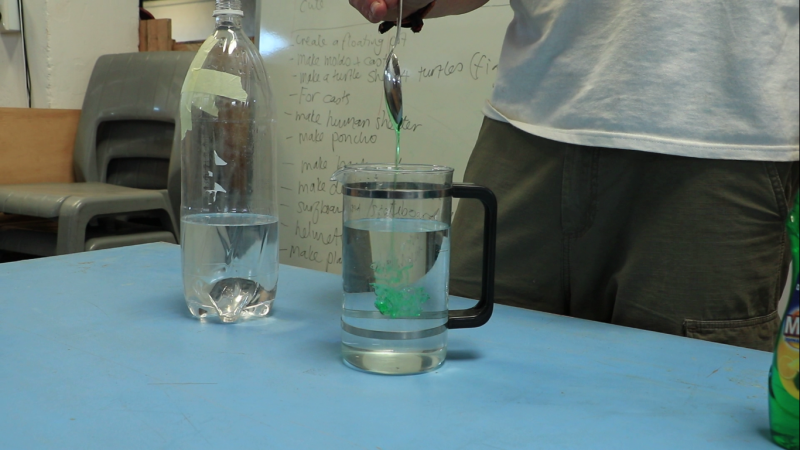
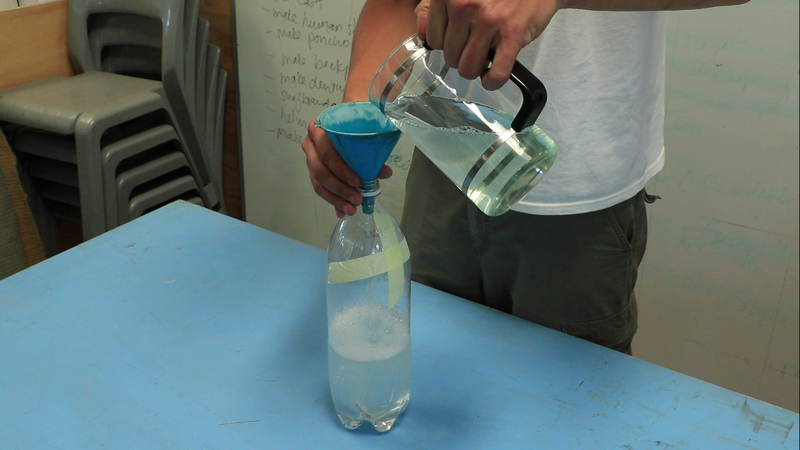
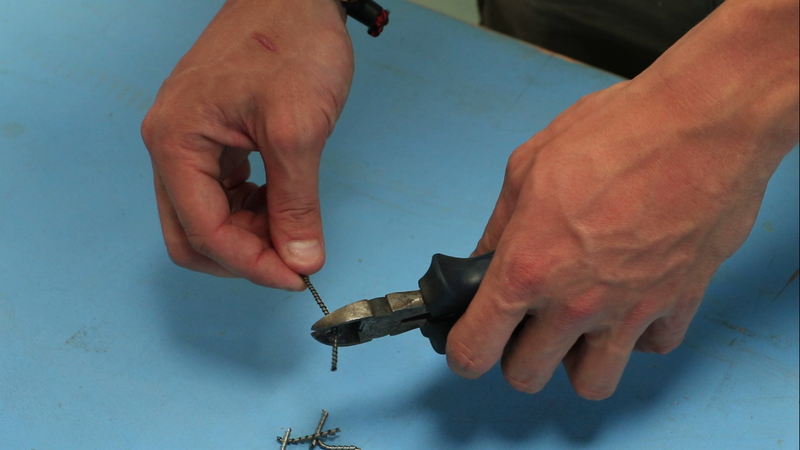
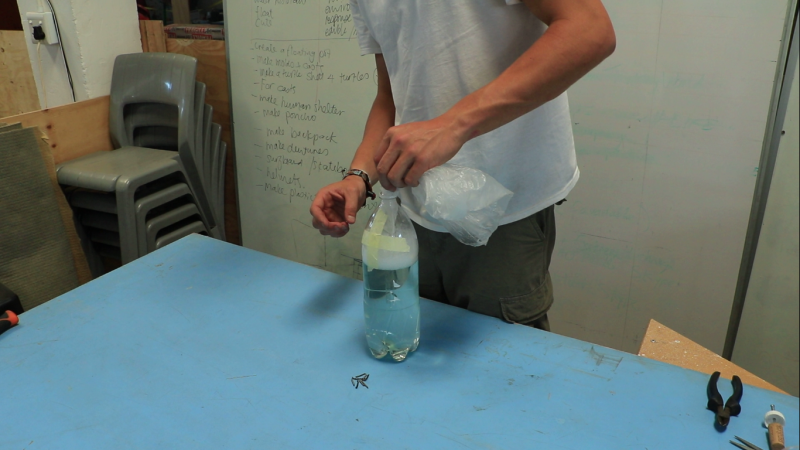
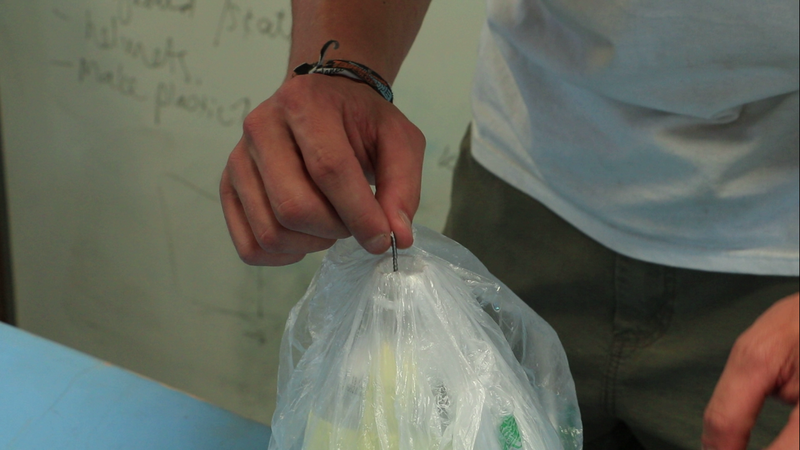
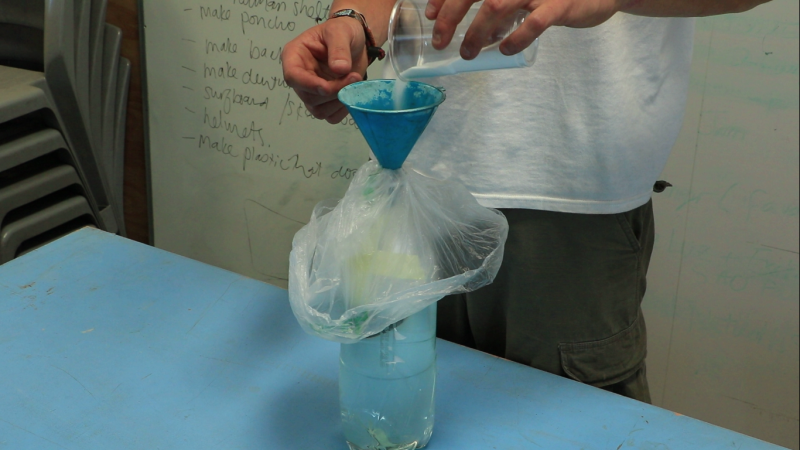
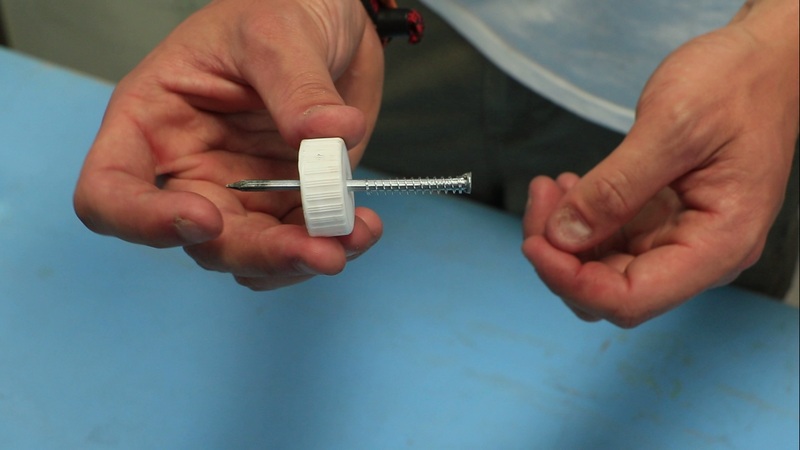
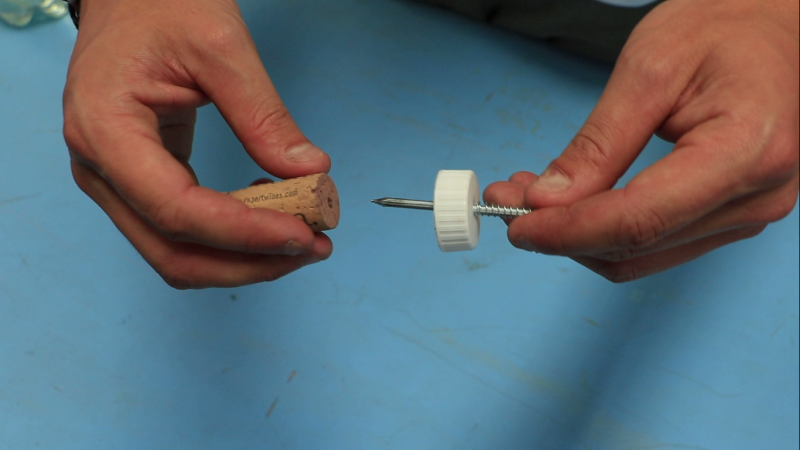
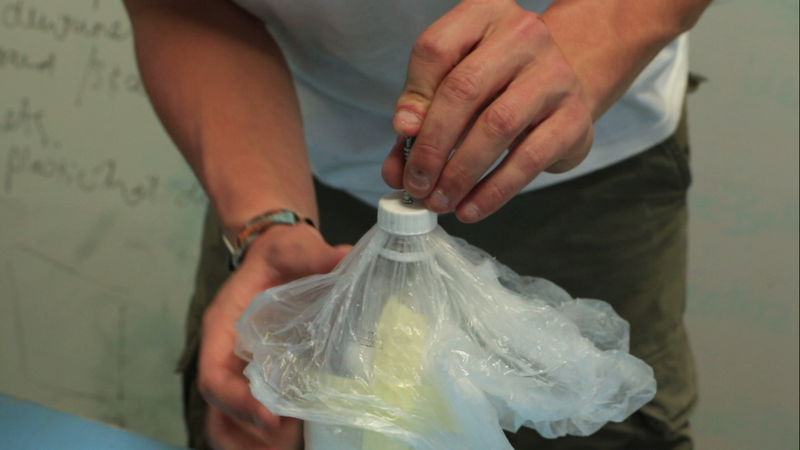
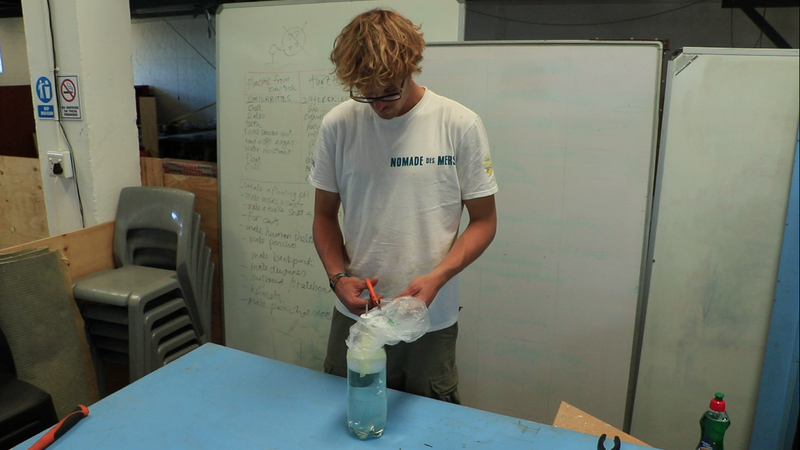
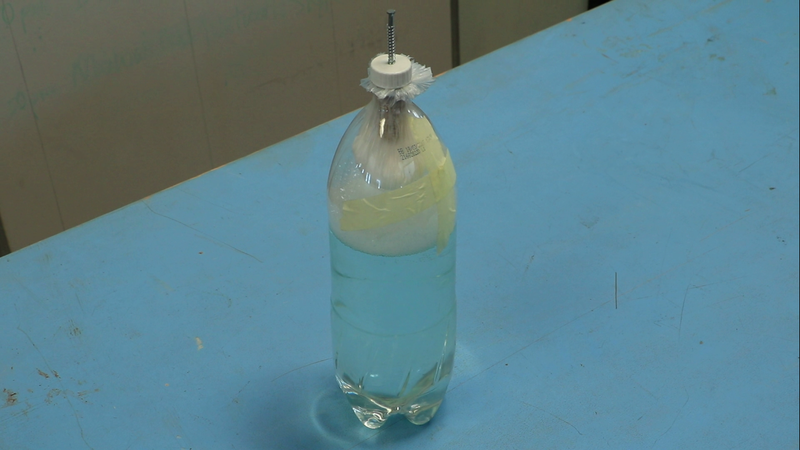
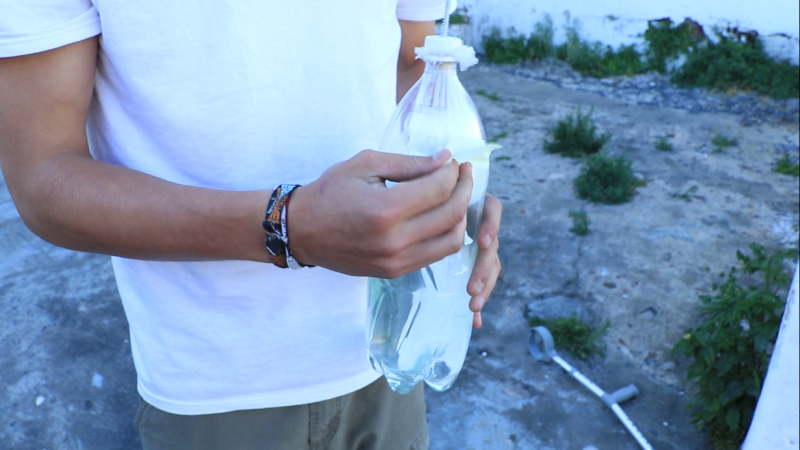
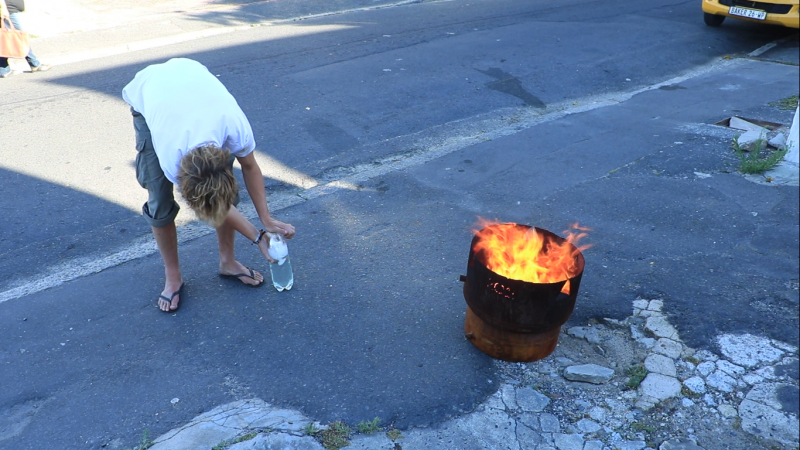
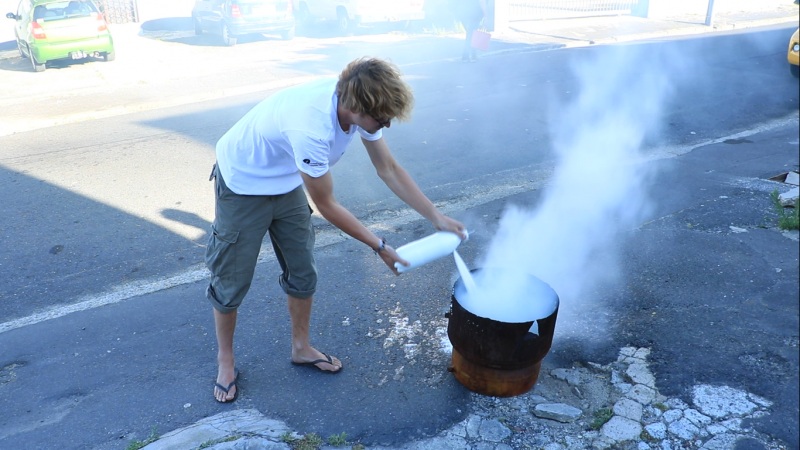
 Français
Français English
English Deutsch
Deutsch Español
Español Italiano
Italiano Português
Português